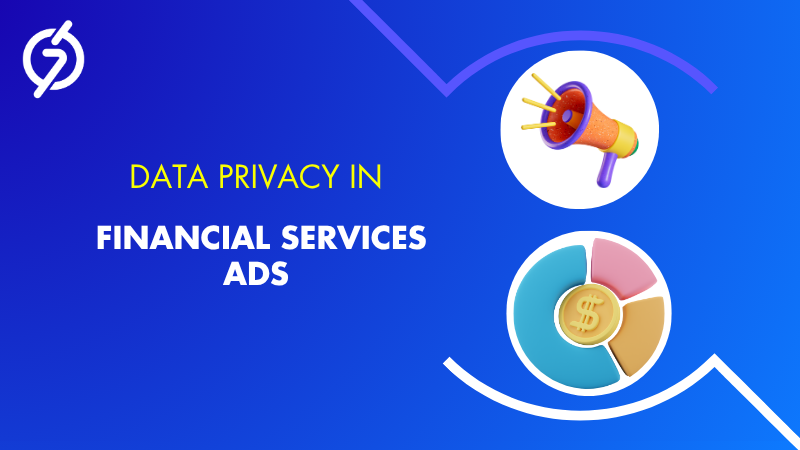In today’s fast-paced financial ecosystem, Financial Services Ads are no longer just about reaching a wide audience. Advertisers are grappling with evolving data privacy regulations that reshape how campaigns are planned and executed. Did you know that 87% of financial marketers now cite data privacy as a top factor influencing ad targeting strategies? This shows that respecting privacy isn’t merely compliance—it’s central to campaign effectiveness and brand trust.
As banks, investment firms, and fintech platforms continue to expand their digital footprint, understanding the balance between personalization and privacy becomes critical. This article explores the intersection of privacy policies, data protection, and financial advertising, offering insights to make your campaigns smarter, safer, and more effective.
The Market Reality
Financial brands face a unique challenge in advertising: the need to gather sufficient data to personalize messaging while remaining compliant with privacy regulations such as GDPR, CCPA, and sector-specific standards like GLBA. According to recent research, nearly 65% of financial services customers are wary of sharing personal information online, which directly impacts the efficacy of ads if mishandled.
For advertisers, this means that a typical campaign may not reach its full potential if audience targeting is overly restricted due to privacy concerns. On the other hand, ignoring privacy rules can lead to hefty fines, reputational damage, and declining customer trust.
The pressure is real. Financial institutions are often at the frontline of public scrutiny, and Financial Sector Ads are expected to reflect both marketing effectiveness and ethical responsibility.
Navigating Privacy Without Losing Impact
One of the biggest hurdles for advertisers in the financial sector is finding the sweet spot between targeting precision and privacy compliance. Traditional ad strategies often rely heavily on tracking cookies, behavioral data, and user profiling. However, with third-party cookies being phased out and users increasingly opting out of tracking, conventional methods are losing ground.
This leads to two key challenges:
- Reduced personalization – Ads may become less relevant, resulting in lower engagement and conversions.
- Compliance complexity – Navigating multiple regulatory frameworks across different regions adds operational overhead.
For example, a bank running a cross-border ad campaign may need to adapt its targeting for each country to comply with local laws, which can dilute messaging efficiency and increase campaign costs.
Lessons from the Experts
Industry leaders are increasingly advocating for privacy-first advertising approaches in finance. Instead of seeing privacy as a limitation, some advertisers view it as an opportunity to build trust and stand out.
A recent trend is the use of anonymized, aggregated, and first-party data to maintain personalization while respecting user privacy. Experts note that campaigns designed around Finance Service Promotions that leverage consent-based data often outperform those relying on intrusive tracking methods.
Another practical approach involves predictive modeling using anonymized datasets. By analyzing historical engagement and demographic trends, marketers can anticipate audience interests without collecting sensitive personal data directly. This maintains relevance and boosts ROI while remaining compliant.
For those exploring the balance between privacy and performance, tools like advanced CRM segmentation, privacy-first analytics platforms, and secure customer data storage systems are increasingly essential.
How Smarter Ad Approaches Solve Privacy Challenges
Adopting smarter, privacy-conscious strategies does not mean sacrificing effectiveness. In fact, it can enhance it. Here’s how:
- Contextual Targeting Over Behavioral Targeting – Instead of tracking individual users, ads can be delivered based on the content being consumed. For example, a user reading articles about retirement planning could see promotions for retirement accounts without any personal tracking involved.
- First-Party Data Utilization – Leveraging customer information obtained directly with consent allows brands to create precise campaigns. By combining transaction data, preferences, and engagement history, marketers can maintain relevance without relying on third-party tracking.
- Transparent Consent Practices – Clear communication about how data is collected and used encourages users to opt in, providing higher-quality data for campaign targeting.
For instance, implementing a consent-based approach for your Financial Services Ads Goal Using Targeted Promotions can ensure your campaigns reach genuinely interested audiences while respecting privacy standards.
Integrating Privacy into Campaign Strategy
A modern campaign strategy in financial advertising should integrate privacy at every stage. This starts with data collection and extends to ad creative, targeting, and performance measurement.
Key steps include:
- Audit Existing Data Practices – Understand what customer data you currently hold, where it comes from, and how it is used.
- Define Data Usage Policy – Create a transparent framework that aligns with regulations and clearly communicates to customers how their data supports advertising relevance.
- Prioritize Consent and Transparency – Incorporate easy opt-in and opt-out options within campaigns. Transparency builds trust and can improve engagement rates.
- Use Privacy-Friendly Technology – Platforms that offer secure data management, anonymization, and ethical analytics provide a safer foundation for Financial Brand Ads.
By integrating these steps, advertisers not only stay compliant but also strengthen customer loyalty—a crucial factor in finance marketing where trust is a currency as valuable as money.
For brands looking to expand their advertising reach, partnering with a Finance Ad Network ensures compliance and access to high-quality inventory suitable for finance promotions.
Privacy-First Campaigns
Consider a mid-sized fintech company launching a campaign for a new savings account. Instead of using invasive tracking, the campaign relied on first-party email subscribers and anonymized usage data.
The result:
- 20% higher click-through rate compared to prior campaigns using third-party cookies
- Reduced opt-out complaints due to transparent consent practices
- Improved overall ROI by 15% because ads were reaching genuinely interested users
This demonstrates that respecting privacy can go hand-in-hand with campaign success. Advertisers who embrace privacy as a strategic advantage can outperform competitors who ignore evolving standards.
Beyond Compliance: Building Brand Credibility
Data privacy in financial advertising is not merely a regulatory hurdle—it is a credibility tool. Consumers are increasingly selective about whom they trust with their financial information. Campaigns that emphasize security, transparency, and consent naturally align with consumer expectations.
By highlighting these elements in Financial Services Ads, brands communicate respect and reliability, which reinforces long-term customer relationships. Marketers who embed privacy into their campaigns signal responsibility and leadership in a competitive marketplace.
Actionable Tips for Advertisers
- Invest in First-Party Data Collection – Emails, app interactions, and surveys provide valuable insights without compromising privacy.
- Implement Consent Management Platforms – Streamline user permissions while documenting compliance.
- Use AI to Optimize Privacy-Friendly Campaigns – Leverage predictive analytics to improve targeting using non-personalized data.
- Educate Your Audience – Transparency about data use fosters engagement and trust.
Advertisers ready to implement these strategies can directly start by choosing to Create an ad campaign on platforms that prioritize privacy while maximizing reach.
The Future of Financial Services Ads
The landscape of Financial Services Ads is evolving rapidly. Privacy-first regulations will continue to shape targeting strategies, while emerging technologies such as AI, secure data clean rooms, and consent-driven analytics will provide new avenues for personalization.
Forward-thinking advertisers will focus not just on compliance but on using privacy as a differentiator. The ultimate goal is campaigns that are relevant, effective, and trusted by the audience. Those who adopt these principles early will have a competitive edge in both engagement metrics and brand reputation.
Conclusion
Data privacy is no longer an optional consideration for financial advertisers. It is central to effective campaign design, audience trust, and brand credibility. By integrating privacy-conscious strategies, leveraging first-party data, and focusing on transparent consent practices, advertisers can transform potential limitations into strategic advantages.
Incorporating Financial Services Ads that respect privacy ensures not only compliance but also higher engagement, better targeting, and long-term brand loyalty.


 :
: